Would you like to have a foxtail palm in your yard? Before you think about the answer, you are probably wondering why the plant is called this way. If you look at the photo of this palm tree, the answer is clear.
We know that a fox’s tail is thick and bushy. If you compare it to the leaves of this palm tree, it is exactly the tail of a fox! The Foxtail palm is one of the most popular palms in South America.
In these regions, every third yard has one such palm in the yard. They grow relatively fast, grow tall, and are not messy. These are just some of the reasons people plant them.
The first and basic reason is its truly beautiful appearance. When you enter such a yard, the first thing you think is this is powerful! And who does not want to make such an impression on neighbors or strangers?
If this palm tree is your choice, let’s learn more about its care below.
About A Foxtail Palm Tree
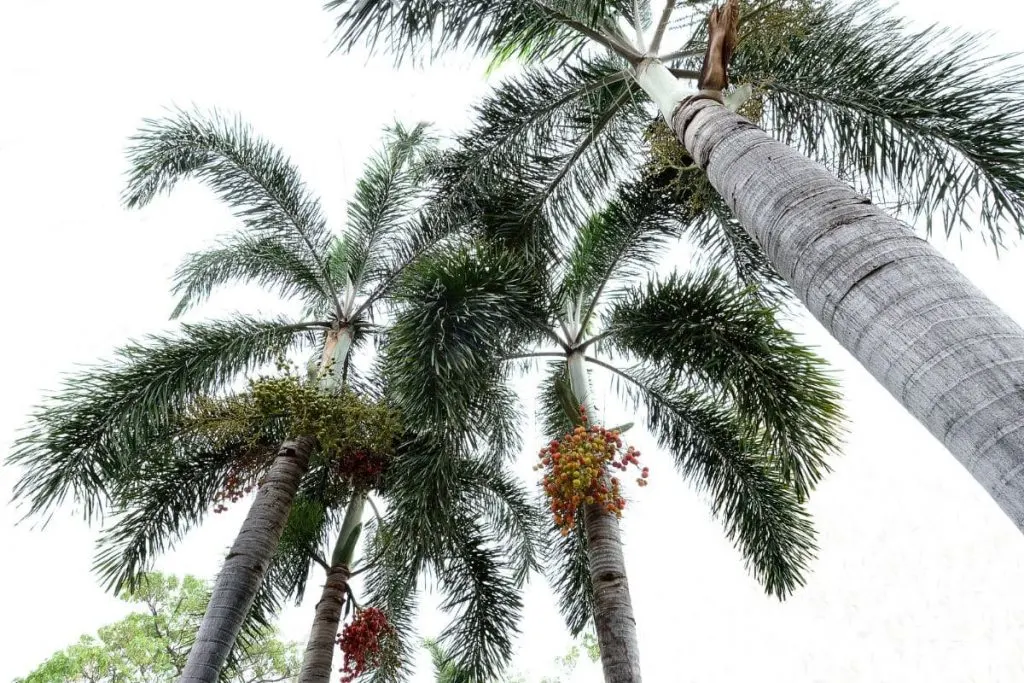
Originating from Australia, dark grey foxtail palm will be your new favorite yard tree. It has perfect proportions, it is not a messy plant and its rounded fronds definitely deserve its name. It adapts well in most climates even though it is a true palm tree.
People usually use them for landscape designs and as hedge trees in many parts of the world. They reach maturity when they’re between 11-12 years old. They remain green in the winter months.
- Native habitat: peninsula of Australia
- Botanic name: wodyetia bifurcate, foxtail palm wodyetia bifurcata
- Family: Palmae
- Subfamily: Arecoideae
- Leaf shape/color: dark grey, closely ringed
- Fruits: orange-red fruit at its maturity
- Flowers: thin and small white-yellow flowers
- Growth rate/type: moderate growth rate
- Toxicity: can cause infections, abscesses, etc
- Use: yard trees, hedge trees, etc
- How and where to plant them: by seeds planting/propagation, sunny-partial shade location
Care Guide For Foxtail Palm Wodyetia
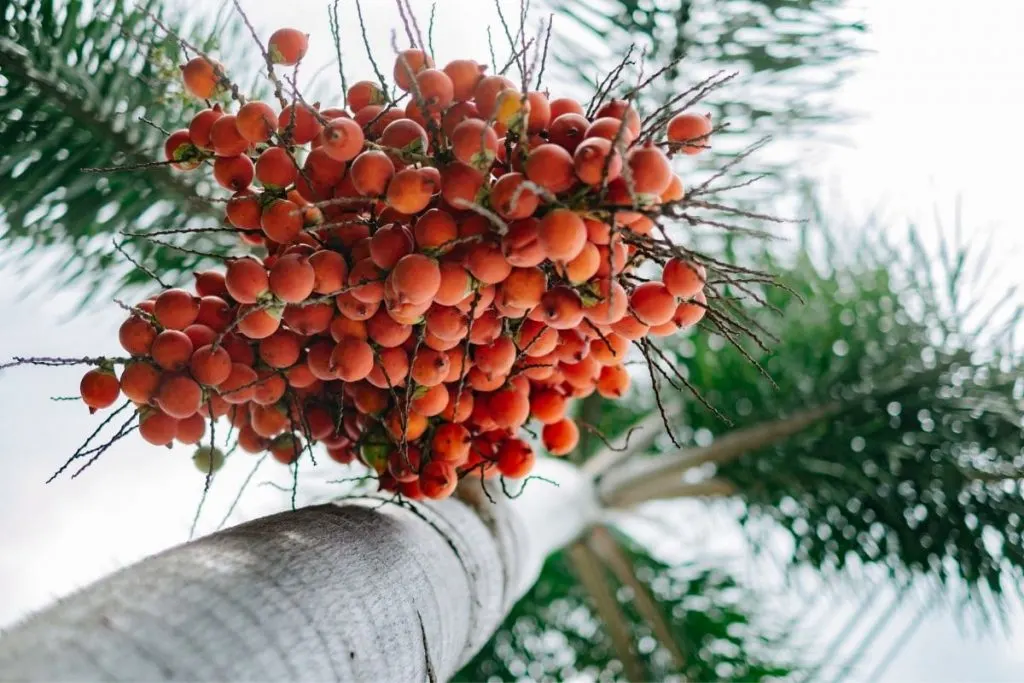
Let’s learn how to deal with foxtail palm species in our yard. Below we bring you the simple and ultimate care guide for foxtail palm.
Let’s see how to take proper care of the foxtail frond, its trunks, and the seedling.
Light Needs
Foxtail palm likes direct sun. She will be very grateful for the sunny position you provide her. You can give it a touch of shade, but let the sun be the priority for this species.
It does not like and will not grow in complete shade, remember this right away.
People often force palm trees to grow behind the house where there is complete shade and rarely do such plantings succeed.
Watering Schedule
This palm tree needs a lot of water to grow happy and satisfied. It is best to water it every 5 days in warm summer temperatures.
In the period of colder, ie lower temperatures, it can be watered every 7-8 days without problems.
In the first cycle of planting, if you give it more water you will see a difference. In this period watering is essential for the foxtail palm.
Soil Type
Most palms love sandy-loamy soils, and so does this palm. Do not experiment with soil types for palm trees. We often do this with house plants and some smaller plants in the garden.
Now we are talking about palm trees. In order to have a plant ie a tree 30 feet tall in the garden, the effort is still required.
Fertilizer
Try to find a fertilizer heavy on nitrogen. Any other fertilizers will not feed your palm as well as this fertilizer.
Just like with soil types, don’t experiment with fertilizer either. Forget about granular fertilizer for palm trees.
Temperature
The plant grows best in warm regions with temperatures between 75 and 80 F. It can adapt to colder temperatures, but the color and appearance of the entire palm will definitely not be the same.
When palm trees are happy, their leaves shine and stand upright and “at right angles”, while an unhappy palm tree has a slightly droopy appearance. The lowest temperature it can handle is 55 F.
Humidity
Humidity is not so important for this palm tree. It can adapt to a humidity of 40% and even 70%.
The ideal conditions for this palm are 60%. This is exactly the average humidity from the region where this palm originates.
Pruning
It may happen that your palm tree has yellow ends. As soon as you notice the slightest difference in the color of the leaves, react.
Immediately remove the yellow tips with sharp scissors and prevent further spread.
I’m sure you’ve seen many palm trees with yellow tops. Trimming takes 10 seconds and I think anyone can find time to do it.
You can also prune them at the end of the flowering season. When they start growing a bit more, well, then hire a crane (just kidding).
Propagation
Spawning these plants is very easy. It is best to do it from seeds. It is the flowers that give the seeds for planting, so after flowering store them in a dry place, wrap them in a tissue or paper and protect them.
When it’s time to plant, plant them in a sunny spot in a container. Water the soil, add a little fertilizer, and cover with foil. The foil serves as a moisture and water retainer, which is very necessary during germination.
After 4 weeks you will see significant changes. Only when it begins to form a stem, transplant it into a larger pot. If you do it too early, you will disturb the roots. What seemed like a successful planting can be reversed.
Few More Info About The Foxtail Palm
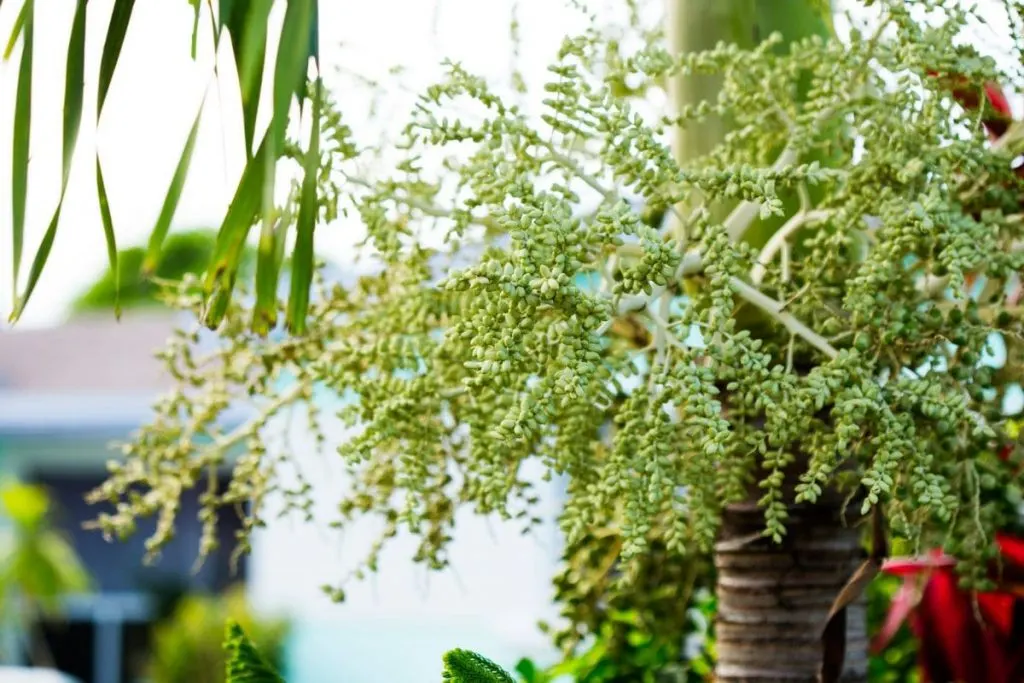
We are not done yet. I’m sure you feel like we lack something even though we just read its entire care guide. That’s because you probably still have a lot of questions about this plant. Its care guide is simple, but the plant itself isn’t. To make sure you don’t make any mistakes when growing and planting this plant, let’s check out the questions we prepared for you below.
If you are interested in other palms, take a look at the areca palm, adonidia palm, or the Alexander palm.
How Tall Do Foxtail Palms Get?
When growing in a full-sun location, they can reach around 30 feet. If you’re growing them in more shady areas, they will reach around 10 feet in height.
Its stems are usually around 13 inches long with leaves/fronds around 10 feet long on them.
Is Foxtail Palm Messy?
You will find it in the gardens of millionaires’ houses precisely because of its cleanliness, neatness, and self-cleaning advantage.
How Hardy Is Foxtail Palm?
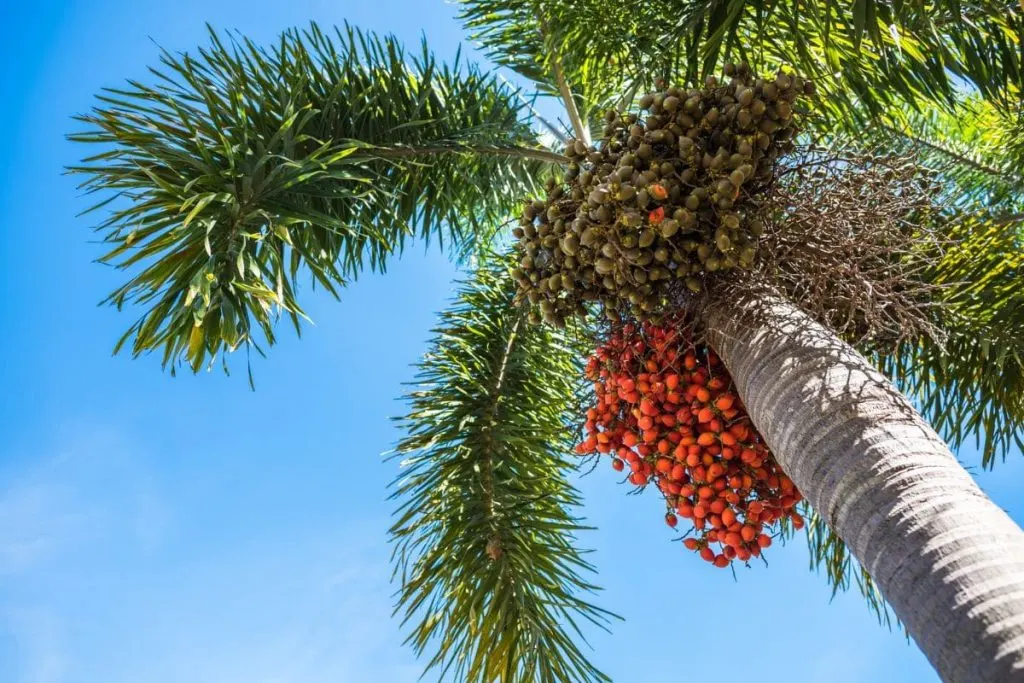
Grow foxtail palm in hardiness zones 10 and above and you won’t have any issues. It is an adaptable palm, but USDA zone 10 is the perfect one for its growing habits. Since this plant doesn’t stand cold temperatures, we wouldn’t advise you to try planting it in such areas. It will only take much of your time and effort for a plant that can’t grow in such areas.
What’s The Difference Between A Royal Palm And A Foxtail Palm?
How Close To The House Can You Plant Foxtail Palms?
Final Thought
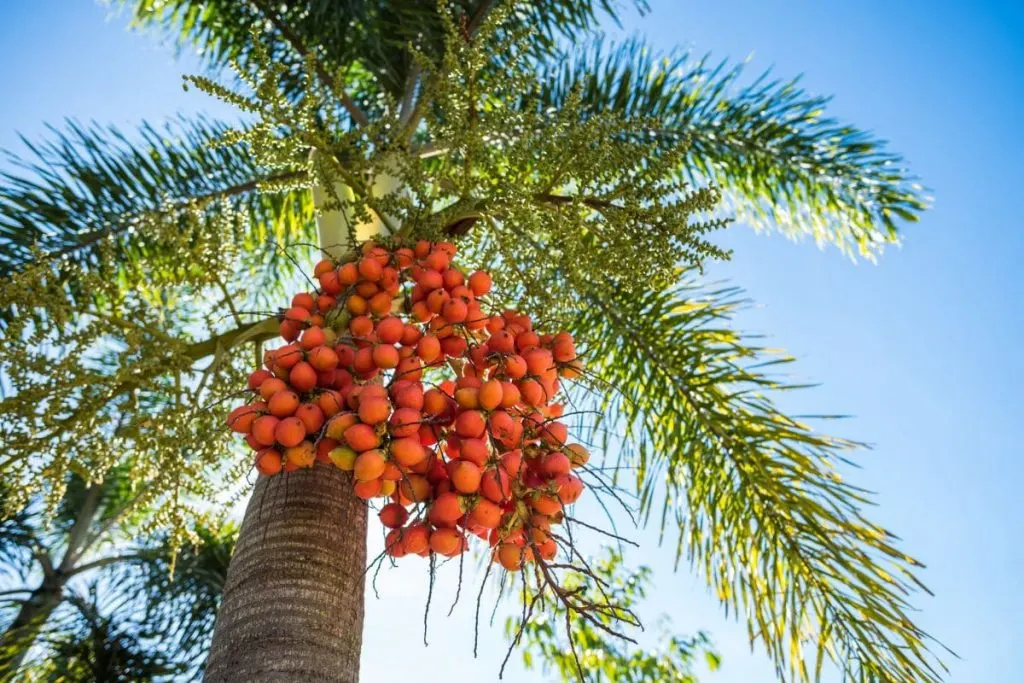
What do you say then, are you thinking now about planting foxtail palm in your yard? If you’re in doubt, maybe you should consider the types of palm trees in California or the types of palm trees in Florida. They’re just as wonderful! But let’s focus now on the foxtail palm and its care guide summary.
They thrive the best in full sun conditions, and well-drained soil. If you grow indoors this plant, won’t thrive as well as it would outside.
It has a cold tolerance, it is self-cleaning and its seeds are perfect for the propagation of the seed and effective 98% of the time.
However, this orange-red leaves plants are toxic. If you digest its seeds, your throat might get slightly swollen, it can cause skin irritation, and so on. When watering, don’t water its dark grey trunk directly. Practice regular watering every 7 days for good growing conditions.
Thanks to the aboriginal man brought from the 20th century, today we know about this lovely plant. That would be all for today. Happy planting! See you tomorrow.

